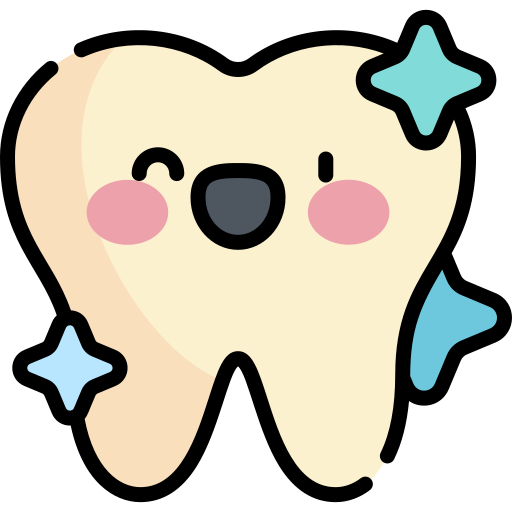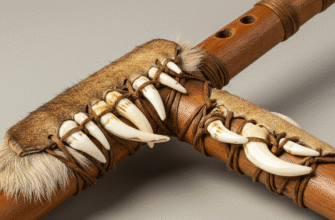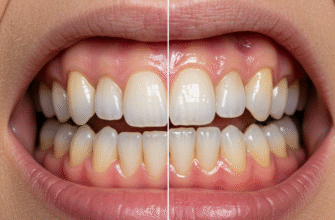History, as we often encounter it, is a grand tapestry woven from battles, treaties, and the lives of prominent individuals. Yet, sometimes, the most compelling evidence and the keys to unlocking stubborn mysteries lie in the most unexpected of places. Forget dusty archives or grand pronouncements for a moment, and consider the human mouth. It might seem an odd repository for historical secrets, but dental records have, on numerous occasions, played a pivotal role in identifying figures who shaped our past, offering silent testimony long after their voices fell silent.
The Unmistakable Dental Signature
Why teeth? What makes these small, hard structures such reliable witnesses? The answer lies in their unique nature and remarkable durability. Much like fingerprints, no two sets of teeth are precisely alike. Our dental landscape is shaped by a combination of genetics, development, diet, personal habits, and, crucially, any dental work we’ve undergone. Fillings, crowns, bridges, extractions, root canals, the specific alignment of teeth, wear patterns from grinding or specific foods, even the subtle shapes of roots invisible to the naked eye but clear on an X-ray – all these elements contribute to a unique dental profile.
Enamel, the outer layer of our teeth, is the hardest substance in the human body. This incredible resilience means teeth can survive conditions that would obliterate other tissues – fire, decomposition, and the sheer passage of time. They can endure for centuries, sometimes even millennia, holding onto the clues embedded within them. Forensic odontologists, the specialists in this field, are akin to detectives who can read these intricate clues, comparing post-mortem findings (evidence from recovered remains) with ante-mortem records (dental charts, X-rays, and notes made during a person’s lifetime).
Each tooth tells a story, from its natural formation to the interventions of dentists. The combination of natural features and acquired dental work creates a highly individualized pattern. This pattern is so distinct that it often provides a definitive means of identification when other methods fail or are inconclusive. Teeth are truly history’s tiny time capsules.
Whispers from the Ancient and Early Modern World
The use of teeth for identification isn’t just a modern marvel. One of the earliest recorded instances, though grim, dates back to ancient Rome. Agrippina the Younger, mother of Emperor Nero, reportedly ordered the death of her rival, Lollia Paulina. To be certain her command was carried out, Agrippina had Lollia Paulina’s head brought to her. She is said to have identified her rival by examining her teeth, specifically looking for a distinctively discolored or uniquely shaped tooth she knew Lollia Paulina possessed. A macabre confirmation, but an early nod to the power of dental characteristics.
A Patriot’s Contribution to Forensics
Fast forward many centuries to colonial America, and we find a more formal, if still nascent, application of forensic dentistry. Paul Revere, famed for his midnight ride, was also a silversmith and a practicing dentist – one of the first in America to offer services like making false teeth. After the Battle of Bunker Hill in 1775, a mass grave held the fallen, including Dr. Joseph Warren, a prominent Patriot leader. Nine months later, when Warren’s body was exhumed, identification was challenging. However, Revere recognized a small ivory and gold bridge he had crafted for Warren, specifically for a canine tooth. This act of identifying Dr. Warren based on dental work is widely considered one of the first documented cases of forensic dental identification in the United States, demonstrating that even rudimentary dental appliances could serve as powerful identifiers.
Twentieth-Century Conundrums Solved by Molars and Incisors
The 20th century, with its devastating wars and political upheavals, unfortunately provided numerous instances where definitive identification of human remains became critically important. As dental record-keeping became more sophisticated and standardized, so too did the reliability of forensic odontology in resolving historical puzzles, some involving the era’s most notorious figures.
The Romanov Enigma: Imperial Teeth Tell Tales
The fate of Czar Nicholas II of Russia and his family after the Russian Revolution was shrouded in mystery and rumor for decades. Following their execution in 1918, their bodies were disposed of in a manner intended to prevent discovery. When remains believed to belong to the Imperial family were exhumed from a mass grave near Yekaterinburg in 1991, forensic odontology played a significant role, alongside DNA analysis, in confirming their identities. The Romanovs, like many European royals, had access to excellent dental care, and records, though not always complete, did exist. Comparisons were made based on:
- Detailed dental charts and notes from royal dentists.
- The presence of sophisticated dental work for the era, including platinum crowns and high-quality porcelain fillings.
- Skull and jaw structures.
The dental evidence corroborated the DNA findings, helping to piece together the tragic end of the Romanov dynasty. The specific types of dental materials used, such as platinum, were indicative of the high-status dental care they would have received, further supporting the identifications.
Shadows of War: Identifying Prominent Figures of World War II
Perhaps some of the most well-known, and historically significant, uses of dental records for identification come from the aftermath of World War II, specifically concerning Adolf Hitler and Eva Braun. After their presumed suicides in the Führerbunker in Berlin in April 1945, Soviet forces recovered charred remains. The chaotic circumstances and the condition of the bodies made visual identification impossible.
However, Hitler’s personal dentist, Dr. Hugo Blaschke, and his dental technician, Fritz Echtmann, had kept meticulous records of his extensive dental work. These records detailed numerous fillings, crowns, and a distinctive bridge. Käthe Heusermann, Dr. Blaschke’s dental assistant, was captured by the Soviets and was able to recall specific details of Hitler’s and Braun’s dentition. When the Soviets presented her with the dental remains recovered – a jawbone fragment for Hitler and a dental bridge for Braun – she was able to confirm they matched her recollections and the information in the captured records. The unique and complex nature of Hitler’s dental work, including a very particular bridge and the specific locations of other restorations, provided compelling evidence that the remains were indeed his. This identification, though subject to Cold War era secrecy and some lingering conspiracy theories, is largely accepted by historians, with dental evidence forming its core.
It is crucial to note that historical identifications, especially those involving heavily damaged remains or politically charged figures, often rely on a confluence of evidence. While dental records can be exceptionally powerful, they are typically examined alongside other forensic findings, historical accounts, and contextual information. The absence of comprehensive ante-mortem records can severely hamper identification efforts.
The Case of John Wilkes Booth: A Lingering Question
Sometimes dental evidence helps debunk a myth or confirm a lesser-known fact. After assassinating President Abraham Lincoln in 1865, John Wilkes Booth was tracked down and killed (or so the official story goes). However, rumors persisted for years that Booth had escaped. Decades later, a mummified body purported to be Booth’s, known as “St. Helen,” surfaced and was exhibited. In the 1930s, a group of physicians and a dentist examined the mummy. The dentist compared the mummy’s teeth to Booth’s known dental records and concluded they did not match. While this didn’t prove Booth had escaped, it strongly suggested the mummy was not him, showcasing how dental analysis can also be used for exclusion.
The Enduring Bite: How Forensic Odontology Works
The process of dental identification hinges on comparison. Forensic odontologists meticulously examine post-mortem dental evidence – the teeth and jaws of the unidentified remains. This might involve visual inspection, dental X-rays (radiographs) of the remains, and even creating dental models.
This information is then painstakingly compared against ante-mortem records. These records are the gold standard and can include:
- Dental charts: Diagrams filled out by dentists during check-ups, noting existing teeth, missing teeth, fillings, crowns, etc.
- Radiographs: X-rays taken throughout a person’s life can reveal unique root structures, unerupted teeth, bone patterns, and the precise shape and placement of fillings not visible externally.
- Dental models: Plaster casts of a patient’s teeth.
- Dentist’s notes: Detailed descriptions of procedures performed.
The more unique features present and documented, the stronger the basis for a positive identification. A single, common filling might not be enough, but a unique combination of multiple fillings, a distinctive crown, unusual tooth rotation, and specific wear patterns can create an undeniable match. Even the absence of dental work, if a person was known to have perfect teeth with no restorations, can be an identifying factor when compared with records or family testimony.
History’s Hidden Narratives in Our Smiles
The ability to identify historical figures through their dental records is a fascinating intersection of science, history, and detective work. It underscores the unexpected ways in which our physical selves can leave an indelible mark, carrying stories long after we are gone. From ancient empresses to modern dictators, teeth have provided crucial, often irrefutable, evidence, helping to solve mysteries, confirm identities, and bring a measure of certainty to complex historical narratives.
So, the next time you visit your dentist, you might ponder the unique record being created, a detailed map of your own dental landscape. While hopefully never needed for forensic purposes, it’s a reminder that even the smallest parts of us can hold significant truths, sometimes with the power to echo through history itself. The silent testament etched in enamel and gold continues to speak volumes, ensuring that some of history’s most compelling characters can, quite literally, be known by their bite.








